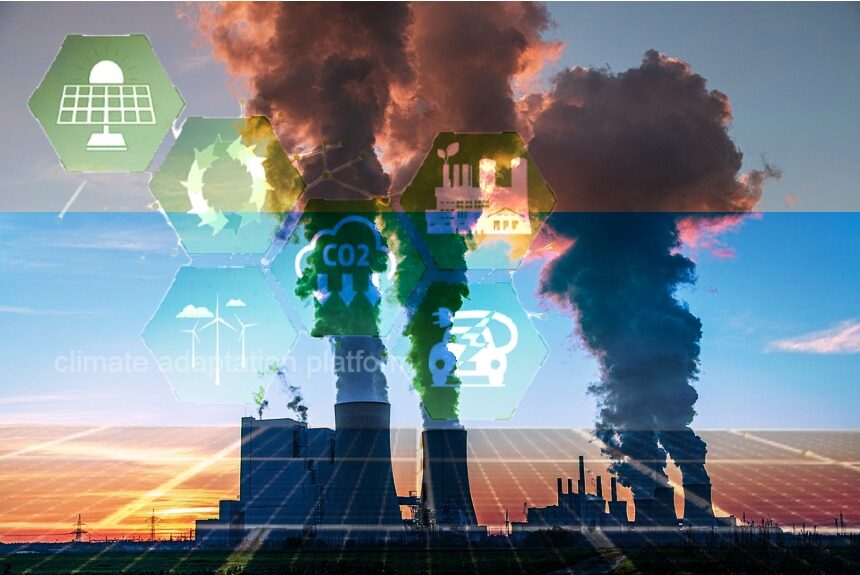Carbon dioxide levels in the atmosphere have yet again reached a new high. The Economist article “Carbon-dioxide levels in the atmosphere hit another new record” says that the Mauna Loa Observatory in Hawaii has been measuring CO2 levels in the atmosphere every year since 1958, correlating its amounts to the growth cycle of plants which absorbs more carbon dioxide in the summer and emits it in the winter.
In 1961, Charles Keeling, the Observatory’s scientist, noticed high CO2 levels on top of these seasonal CO2 fluctuations. And every year since May 1965, they have observed that CO2 in the atmosphere steadily increases at record highs (Carbon dioxide, 2022).
Increase in atmospheric levels of CO2
The article says that this year the monthly average concentrations of CO2 measured by the Mauna Loa Observatory peaked at 420.99 parts per million (ppm), and the highest concentration on a single day at 421.68 was recorded on May 13.
This increase in atmospheric CO2 levels is 30% higher than the levels were 64 years ago and 50% higher than in pre-industrial times. The article notes that the increases in CO2 levels are caused by emissions from human activities, mainly from burning fossil fuels, where coal accounted for 40% of the rise.
In 2015 governments across the globe signed a climate agreement known as the Paris Agreement to limit warming to 1.5°C or below 2°C compared to pre-industrial levels. To achieve this long-term goal, the 196 signatory countries will have to reach a net-zero or climate-neutral world by 2050.
However, the IPCC AR6 published in April 2022 revealed that the world is failing to reach this limit, and the chances of achieving the 1.5°C are becoming narrow.
Current climate policies are placing the world on the path of a 3°C temperature increase, which will have catastrophic consequences, particularly for developing countries with weak adaptive capabilities.
The report says that putting us back on track to reaching the Paris Agreement will need immediate and deep emissions across all sectors (Harvey, 2022).
Southeast Asian countries are among those most vulnerable to climate change impacts. Most developing countries are still heavily reliant on fossil fuels to generate energy.
CNBC reports that Asia-Pacific hosts the world’s largest emitter. Experts believe that successfully fighting climate change will depend on Asian countries curbing their reliance on fossil fuels, particularly coal (Lee, 2021).
Among fossil fuels, coal is the most widely used in the region for energy at 48%, followed by oil (26%), natural gas (12%), and others fuels (14%). China and India are the top two coal users for their energy and the world’s first and third-largest carbon emitter, respectively.
The region’s transition to renewable sources has also remained “far too slow”, observed Gavin Thompson, Asia-Pacific vice-chairman at energy consultancy Wood Mackenzie.
Among these Asian countries, Vietnam leads the way in switching to renewable energy. The Economist article, “Vietnam is leading the transition to clean energy in South-East Asia”, says that in four years leading to 2021, Vietnam’s solar energy grew from almost zero to 11%.
The article says Vietnam’s renewable energy growth is faster than bigger economies like Japan or France. In 2021, the country will become the world’s 10th biggest solar power producer.
Vietnam owes this success to its prime minister Pham Minh Chinh, who vowed to stop building new coal-powered plants in November and aims to reach carbon net-zero by 2050 (Vietnam is, 2022).
A study from the Australian National University attributes this “extraordinary achievement” to the country’s policy and market incentives. The article notes, “In 2017, the government began paying solar-power suppliers a fixed-rate “feed-in tariff” of as much as 9.35 us cents for every kilowatt-hour they delivered to the grid, which was generous given that costs typically range between 5 and 7 cents per kilowatt-hour.
The result is that 100,000 rooftop solar panels were installed in 2019 and 2020, increasing the country’s solar capacity by a whopping 16 gigawatts. Other Southeast Asian countries have tried feed-in tariffs, but they have been insufficiently enticing.”
More work to be done
But despite this success, the country still needs to work harder if it wants to achieve net-zero by 2050. It must continue weaning off coal which has grown from 33% to 55% in the last five years leading to 2021, and ramp up wind and solar energy every year (Vietnam is, 2022).
Additionally, the country needs to upgrade and expand its energy grid to supply power to the entire nation, absorb the growth of renewable energy, and cope with the intermittent nature of power from renewable sources, the article says.
Vietnam’s achievement in renewable energy should serve as an example to its Asian neighbours and the world.
But suppose the world has any chance of achieving net-zero carbon by 2050. In that case, the International Energy Agency (IEA) says that all countries must pull their weight and double the transition rate to renewable energy. According to IEA, almost two-thirds of electricity generation worldwide must be renewable by 2030 to meet the Paris Agreement target (Broom, 2021).
Source:
Carbon-dioxide levels in the atmosphere hit another new record. (2022 June 13). The Economist. Retrieved from https://www.economist.com/graphic-detail/2022/06/13/carbon-dioxide-levels-in-the-atmosphere-hit-another-new-record?
Harvey, F. (2022 April 4). IPCC report: ‘now or never’ if world is to stave off climate disaster. The Guardian. Retrieved from https://www.theguardian.com/environment/2022/apr/04/ipcc-report-now-or-never-if-world-stave-off-climate-disaster
Lee, Y. (2021, November 7). Asia-Pacific is home to some of the world’s largest carbon-emitters -E charts show its reliance on coal. CNBC. Retrieved from https://www.cnbc.com/2021/11/08/cop26-charts-show-asia-pacifics-heavy-reliance-on-coal-for-energy.html
Vietnam is leading the transition to clean energy in South-East Asia. (2022 June 2). The Economist. Retrieved from https://www.economist.com/asia/2022/06/02/vietnam-is-leading-the-transition-to-clean-energy-in-south-east-asia?
Broom, D. (2021, December 3). This chart shows how fast renewable energy must grow to reach the world’s net-zero targets. World Economic Forum. Retrieved from https://www.weforum.org/agenda/2021/12/doubling-renewable-energy-net-zero-emissions/



Leave a Reply